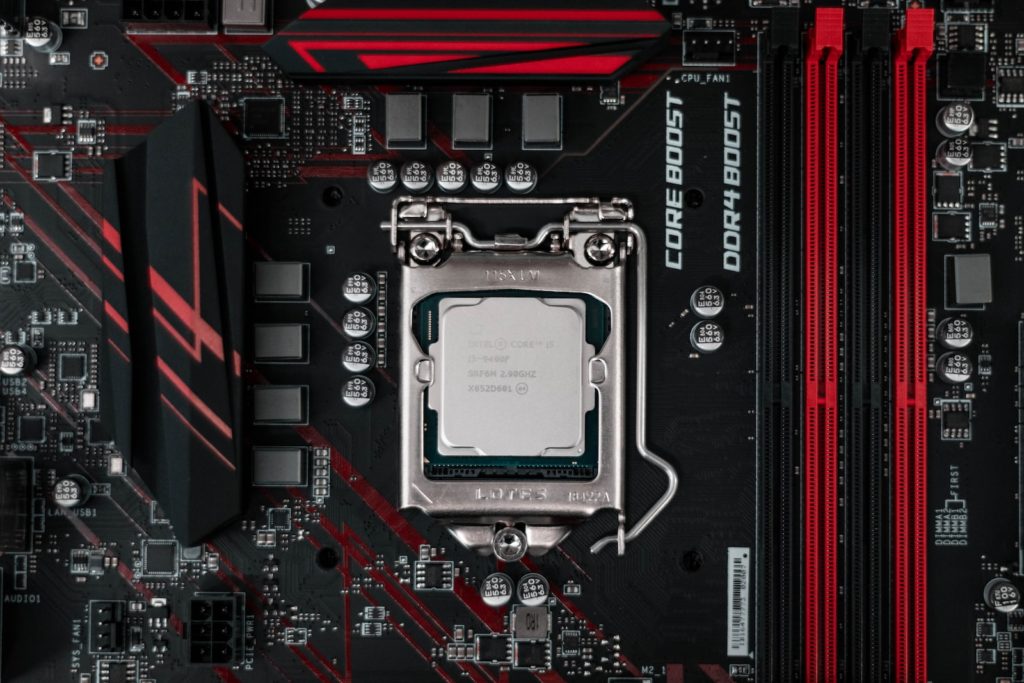The semiconductor industry is a $300 billion business, and it’s growing fast. It employs more than 650,000 workers worldwide, which is almost twice as many as the coal mining industry. The semiconductor industry has been around for decades, but its growth has accelerated in recent years due to strong global economic growth and the rise of new technologies such as the Internet of things (IoT). Despite this rapid growth, semiconductor stocks have been very volatile in recent years due to concerns about cooling demand from China and other factors—but there are signs that demand will pick up again by 2020 at the latest. If you’re looking for an investment opportunity that will last several years into the future rather than just one or two quarters out then semiconductors may be worth your consideration

Strong sales growth has been the norm for semiconductor stocks.
The semiconductor industry has been a reliable source of strong sales growth for the past few decades. While over the past 10 years, this has been less true than it was in previous periods, semiconductor stocks have still managed to deliver solid growth even as profits have plummeted.
In fact, since 1997—when Apple released its first iPod—semiconductor stocks have averaged more than 15% annualized sales growth per year.
A strengthening global economy should help these companies.
The global economy is improving, and this should help semiconductor companies.
Because the rest of the world is improving, it’s likely that semiconductors will continue to grow in popularity.
The global economy has improved over recent months, and that trend may continue for some time.
Semiconductor stocks should do well as the global economy continues to get stronger in coming years. As such, we expect these stocks to perform well over the long term (and even short term).
The Internet of things has boosted sales.
The Internet of things (IoT) is a network of physical devices, vehicles, home appliances and other items embedded with electronics, software, sensors, actuators, and connectivity which enables these objects to connect and exchange data. The term IoT applies to the concept of interconnecting electronic devices embedded in everyday objects such as clothing or health care accessories with wireless technology for communication between so-called “things”.
IoT is estimated to consist of 50 billion objects by 2020.

Semiconductor companies are often small, so large companies acquire them.
One of the most important advantages of investing in semiconductor companies is their ability to grow through acquisition. Semiconductor companies are often small, so large companies acquire them when they need to expand into new markets or have a specific product line that they want to add. This is a key way that semiconductor companies grow, and it’s definitely something you should consider when choosing your investments.
Automotive-related semiconductors are growing rapidly.
In 2017, the semiconductor industry was growing at a rate of about 10%. That’s excellent growth for any industry, but it’s particularly impressive given the fact that semiconductors are not typically considered to be an “exciting” or rapidly growing sector.
In fact, many people might not even realize just how much semiconductor stocks have become a part of our daily lives. The world’s leading tech companies have made their fortunes in this industry over the past several decades. The iPhone is packed with thousands of chips from companies like Intel and Qualcomm; other companies like NVIDIA make specialized graphics processors used in self-driving cars and virtual reality headsets; even more specialized chips power everything from your phone charger to your computer monitor.
And yet despite all these areas where semiconductors are so important, one area stands out as being on an incredible trajectory: automotive-related semiconductors!
Semiconductor stocks can be volatile, so watch out.
But what does all of this mean for your portfolio? It means that semiconductor stocks can be volatile, so watch out. Volatility is a good thing when it comes to trading and investing because it allows you to make quick decisions on whether or not you want to hold onto a certain position in a company’s stock.
Volatility also provides investors with opportunities for quick profits. If the price of a semiconductor stock rises too high during its daily trading session, an investor could buy into that stock at the end of the day and sell it again when prices have fallen back down after closing hours. This strategy would allow investors to profit off of any rise in value without having to stick around on their positions long enough for any dips in value (and subsequent losses).
Finally, volatility helps provide protection against losses: because they are subject to high price swings over short periods of time, companies within this sector tend not only losing profits but also losing money completely if sales drop suddenly or interest rates rise unexpectedly due their reliance on consumer spending habits
Intellectual property is crucial in this industry.
In the semiconductor business, intellectual property is a huge part of the game. It’s what makes some companies more valuable than others, and it’s what makes some companies more successful than others. In fact, you can tell how profitable a company is based on its IP holdings alone—the best example I have of this is Intel (INTC), which has some of the best patents in the industry. Not only does Intel have great patents for its chips but also for its manufacturing equipment and processes as well; these are called “process technologies.”
One thing that people don’t always realize about these patents is that they can be licensed out to other companies who want to make products based on them or use them as inspiration in their own designs. The licensing side of things helps make up for any losses incurred by competition in one area while giving Intel another source of revenue through licensing agreements with other firms who want access to its technology
Chipmakers don’t make money unless their chips are used.
The chipmakers don’t make money unless their chips are used.
If you’re an investor, it’s important to understand this point: Chipmakers don’t make money unless their chips are used. This is what makes semiconductor stocks so risky; you can’t just look at the company’s sales and earnings reports alone. You have to take into account how many wafers they made (a wafer is the silicon foundation on which chips are built), how much revenue those wafers generated, and whether any of them went unused.
The semiconductor industry has a cyclical reputation, but that’s less true these days.
The semiconductor industry has a cyclical reputation, but that’s less true these days.
The semiconductor industry is becoming more stable and less volatile. In fact, it’s one of the most mature sectors in today’s economy—and maturity means stability. The major companies are stable and resilient; they have deep balance sheets and strong cash flows to ride out downturns. And there are many new companies being created with advanced technologies that can take advantage of trends like machine learning, artificial intelligence (AI), autonomous vehicles, 5G wireless networks or virtual reality (VR).
The industry is increasingly consolidated, which can be a good thing for investors who choose the right company.
You’ll be glad to know that there are only a few semiconductor stocks to choose from.
This is a good thing, because it’s made investing in semiconductor stocks much simpler. And if you’re like me and don’t want to do any research or analysis of your investments, then this can be a very good thing indeed!
You see, when it comes down to it, all that matters is how much money each company makes—that’s it. The rest (fundamentals and so on) are just fluff (and sometimes not even that). So if there’s only one company making money in an area of business where everyone else has failed miserably for decades, then who cares about their fundamentals? Just buy the stock and hold onto it forever!
Even if you’re not interested in technology stocks, you should consider investing in semiconductor stocks.
Even if you’re not interested in technology stocks, you should consider investing in semiconductor stocks. This is especially true if you’re a long-term investor and have a diversified portfolio.
For example, semiconductors are only a small part of the economy (about 4%), but they are an important part of the tech economy (about 20%). If you want to diversify your portfolio into the tech sector, then semiconductor stocks can make up 10% or more of your portfolio without having too big an impact on its overall risk profile.
Conclusion
I hope these tips help you learn more about this fascinating industry. In my opinion, semiconductor stocks are an excellent choice for investors who want to play it safe by investing in blue chips with a good track record of performance.

